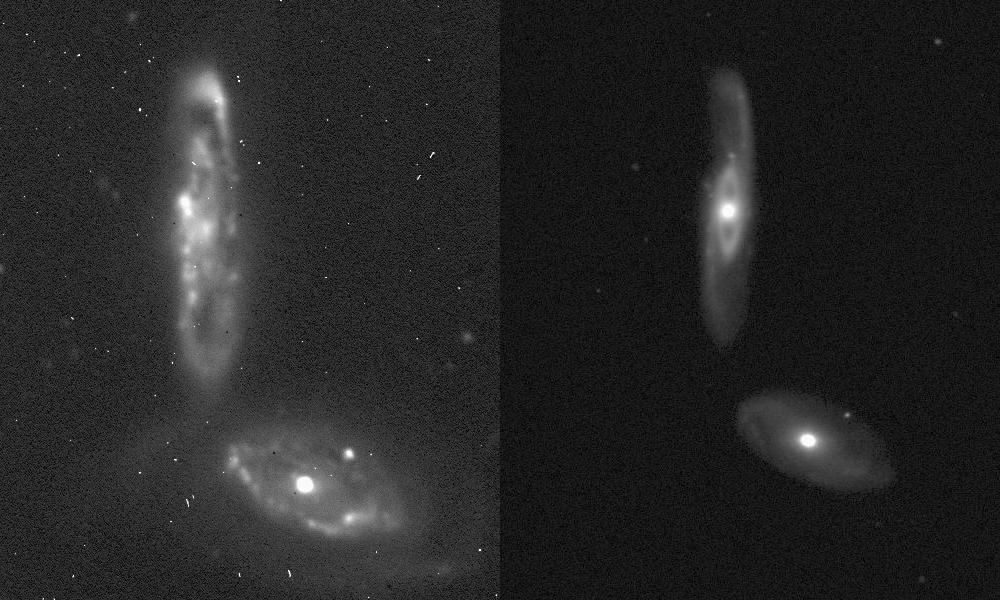| Star Formation in Interacting Pairs of Galaxies | ||
|
The image below shows two views of the interacting pair of galaxies (113704.8+321108.9 is the galaxy in the upper left; 113707.1+321227.2 is the galaxy in the lower right). The image on the left is in ultraviolet light and shows bright rings and knots where luminous blue stars have recently formed. The image on the right is in infrared light and shows radiation from older, red stars. We use these images - the relative amount of blue and red light from various parts of each galaxy - to infer the rate that new stars form and how they evolve with time. You can see that the ring of star formation in the upper galaxy is bright in both images, which indicates that the newly-formed stars are associated with hot dust leftover from the burst of star formation. The other galaxy has no bright ring in the infrared image, so it has no dust. 
| ||



